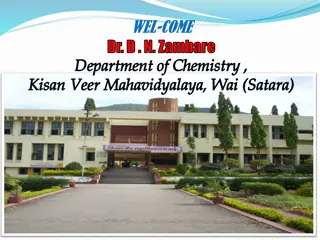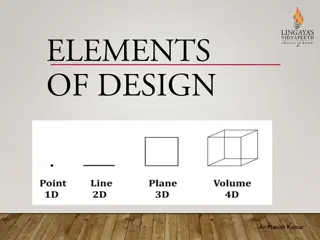Creating Inspiring Presentations Using Visual Elements
In this presentation, Jayden Smith shares tips on engaging audiences with visual content. Explore ways to enhance slides with icons, illustrations, diagrams, and tables for impactful storytelling. Learn to utilize imagery effectively and organize content for maximum comprehension. Discover techniques to incorporate maps, data comparisons, and inspirational quotes for a compelling presentation experience.
Download Presentation

Please find below an Image/Link to download the presentation.
The content on the website is provided AS IS for your information and personal use only. It may not be sold, licensed, or shared on other websites without obtaining consent from the author.If you encounter any issues during the download, it is possible that the publisher has removed the file from their server.
You are allowed to download the files provided on this website for personal or commercial use, subject to the condition that they are used lawfully. All files are the property of their respective owners.
The content on the website is provided AS IS for your information and personal use only. It may not be sold, licensed, or shared on other websites without obtaining consent from the author.
E N D
Presentation Transcript
COMPOSITION OF SEMEN COMPOSITION OF SEMEN
Semen is composed from: Spermatozoa testes Seminal plasma accessory glands (vesicular glands, bulbourethral glands and prostate gland) - In bulls, the greatest contribution to the fluid volume of semen is from the vesicular glands, with minor contributions from the prostate gland and bulbourethral glands - In boars, there are greater contributions from the prostate and bulbourethral glands, with a smaller proportion from the vesicular glands
Semen is composed from - These composition of semen - Bull semen is higher in fructose and sorbitol, which comes from the vesicular glands - Whereas boar semen is higher in most minerals, the major source of these being the prostate gland differences are reflected in the chemical
SPERMATOZOA The concentration (no. /ml) of spermatozoa in an ejaculate of semen is approximately 150 million for stallions, 200 million for boars, 1.2 billion for bulls, 2 billion for rams Theoretically, 50% of the spermatozoa in a given ejaculate will contain X chromosomes and 50% Y chromosomes Approximately 60% to 70% of the spermatozoa in semen are expected to be progressively motile Average speed of 6 mm per minute
SPERMATOZOA In high-quality semen, 80% to 90% of the spermatozoa will have normal morphology Concentration motility percent morphology Spermatozoa of bulls have an overall length of 60 to 70 The head is 8 to 10 long The head is flattened,about 4 wide and 0.5 thick Both boars and rams have sperm of similar size, while sperm of stallions are smaller (about 50 in length)
NORMAL MORPHOLOGY The normal spermatozoon is composed of a head and a tail that is divided into a mid-piece,main-piece,and end-piece The important components of the head include the nucleus,containing the genetic code,which is the sire's contribution to a new offspring The acrosome covers the anterior part of the nucleus and contains enzymes needed for penetration of the corona radiata and zona pellucida during fertilization If the acrosome is malformed,damaged,or missing,the spermatozoon will not be able to participate in fertilization During aging, the acrosome becomes loosened from the nucleus starting at the apical ridge
NORMAL MORPHOLOGY The post-nuclear cap, covering the posterior portion of the nucleus, The point where the tail joins the head contains the proximal centriole and is called the implantation region The head and tail become separated at this point during fertilization Similar separation is sometimes seen in heat-damaged semen
NORMAL MORPHOLOGY The tail (mid-piece,main-piece,end-piece) The mid-piece,a thickened portion of the tail some 8 to 10 long located just posterior to the proximal centriole The mid-piece is characterize by : mitochondrial sheath and mitochondria which convert fructose and other energy substrates into high- energy compounds that can be used by spermatozoa (for movement) : contains enzymes
NORMAL MORPHOLOGY The tail A major feature of the tail is the axial filaments. The axial filament is a small bundle of tiny fibrils that starts at the proximal centriole and runs through the entire tail In mid-piece the axial filaments consist from: 9 course outer fibrils 9 double inner fibrils 2 central fibrils
NORMAL MORPHOLOGY The main-piece (40 to 50 long) The layers of main-piece are : 9 double inner fibrils 2 central fibrils The end-piece (3 long) does not have a protective sheath. The layer of end-piece : 2 central fibrils
THE TAIL The main function of the tail is movement of the sperm (how)? Contractions of these fibrils cause a lashing of the tail, which propels the spermatozoon progressive forward Contractions start at the proximal centriole proceeding sequentially around the perimeter fibrils and rhythmically down the tail These two movements causing a rotation of the entire spermatozoon as it moves progressively forward
SEMINAL PLASMA The fluid portion of semen is seminal plasma The source of seminal plasma is the accessory glands Also some times from the epididymides and vasa deferentia Seminal plasma serves as a buffered, nutrient medium which suspends and maintains the fertility of spermatozoa Seminal plasma is slightly acidic in bulls and rams and slightly alkaline in boars and stallions The osmotic pressure of seminal plasma is similar to blood (equivalent to physiological saline-0.9% sodium chloride)
SEMINAL PLASMA A number of organic and inorganic compounds are in solution in seminal plasma. Proteins Several proteins that have a relationship to fertility have been found in seminal plasma Glycosaminoglycan (GAG)-binding proteins , its role during capacitation The binding affinity of ejaculated sperm for glycosaminoglycan (via binding proteins) corresponds to fertility in bulls Based on profiles of seminal proteins, predicted fertility for bulls The fertility decline with successive ejaculates over a period
SEMINAL PLASMA Inorganic Ions Sodium and chlorine are the principal inorganic ions in seminal plasma Smaller quantities of calcium and magnesium are found Potassium, which is present in substantial amounts in whole semen, is more concentrated in spermatozoa than in the fluid suspending the spermatozoa Thus, when spermatozoa are concentrated, as in the epididymis, the potassium- to-sodium ratio is higher These inorganic ions are important to the viability of spermatozoa, possibly through their effect on the integrity of the sperm cell membrane
SEMINAL PLASMA Buffering Agents Organic ions that serve as buffering agents are found in seminal plasma The principal organic ion is bicarbonate It is produced by the vesicular glands and functions as a buffering agent, against changes in the pH of semen Buffers are not found in sufficient quantities to prevent a reduction in pH when semen is maintained in storage Therefore, good semen diluters must be used to provide sufficient buffering capacity for long-term storage
SEMINAL PLASMA Energy Substrates Several organic compounds that serve primarily as energy substrates for spermatozoa are found in seminal plasma The principal ones are fructose, sorbitol, and glycerylphosphorylcholine (GPC) Fructose (a simple sugar) and sorbitol (a sugar alcohol) are produced by the vesicular glands, whereas GPC is produced in the epididymides All are unique in that they are not found in substantial quantities elsewhere in the body Fructose can be used by spermatozoa as an energy substrate under the anaerobic conditions of storage and the aerobic conditions found in the female tract
SEMINAL PLASMA Sorbitol and GPC can be utilized only aerobically GPC must be acted on by an enzyme found in the female tract before it can be utilized This enzyme splits the choline from the rest of the molecule, forming glycerylphosphate, which can be metabolized as an energy substrate Lactic acid, a by-product of the anaerobic metabolism of fructose builds up in semen that is being stored and theoretically can be used as an energy substrate when placed in aerobic conditions.
SEMINAL PLASMA Fructose is found in high concentrations in bull and ram semen but is much lower in both boar and stallion semen The low concentration of fructose in boar and stallion semen may contribute to the problems of storing semen from these species
SEMINAL PLASMA Other Organic Compounds Compounds found in seminal plasma in rather large concentrations but not used as energy substrates are inositol and citric acid Both are produced by the accessory glands Ergothionine is found in the semen of boars and stallions These compounds are not found in substantial amounts elsewhere in the body ( All these products play role for sperm metabolism)
SEMINAL PLASMA Fatty compounds Prostaglandins and vesiglandins and phospholipids ( All these products play role for sperm metabolism) Vitamins Vitamin C and B complex ( All these vitamins play role as a co factor for sperm metabolism)























